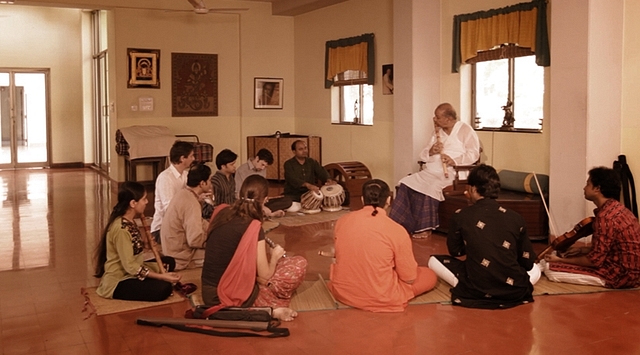
Learning and Learner
A student must learn the basic foundations of Carnatic music slowly. Only then will the person understand their importance and be best prepared to pursue larger musical goals.
Disclaimer: This is based on understanding from my gurus, manaseeka (who I learnt from by listening to them) gurus and my own experience as a performer/teacher.
The methodology of learning Carnatic music has always intrigued me – especially the way the “Pitamaha of music” Saint Purandaradasa has codified the initial lessons for Carnatic music. Many may see these as initial lessons that will quickly allow them to jump into the Varnam-Keerthanam bandwagon.
Personally, I feel that there is a great need to look at these carefully and practise them in the right manner to derive the benefits, especially for beginners. There are exceptions, of course, but I am talking about the general class of learners. The initial lessons offer significant insights that guide the learner in future.
Children, at a very young age, have the ability to grasp them very fast in their own way. They may not fully understand the import of what is being taught, but it stays with them. Somewhere down the line, they may understand what these mean for their music. So, the teachers must not brush aside these foundations, which seep into the children very quickly.
While writing this, I asked myself: who is the learner? Is it someone who is going to be a practitioner, or a person who enjoys the process of learning and listening to music? The first category is there for sure, but the second lot is the one I have in mind. This consists of those for whom practising could be one output, but not an end in itself. For both though, the process of learning these basics opens up new vistas.
The basics start with Sarali varisai (series) in which the learner is introduced to the upward and downward movements of Swara (note) in simple patterns. Then there is a small shift to a pattern where is not continuous; finally it moves to a point where you have a combination of ups and downs and mixed patterns. This gives the first idea of the position of a Swara to the learner.
These are sung in multiple speeds and in different ragas so that the whole gamut of notes is understood and practised by the learner. The core of classical music is Gamakas (oscillations and relationship between swaras). Introducing them as a part of these exercises is advisable, more so because these are supposed to introduce the aesthetics of music to the learners.
There are also multiple practices for Thalam/rhythm using this series, which helps a beginner to have a firm grounding of the basics of melody and rhythm. I have heard that many great masters and teachers of yore did not allow students to cross this stage almost for a year. Nowadays, on the other hand, it is done within 2-3 weeks or even less if you are an examination-oriented student.
Another important aspect is to identify one’s natural voice, voice production and process to tide over voice-breaking and change during adolescence. This is the period in which the guru’s role becomes crucial, since it enables the student to understand how the voice is a key aspect of learning music. The guru has to be “with” the student and patiently wait for the voice to bloom. This provides a completely different dimension of music learning in which the guru’s role becomes one of guidance and not teaching. Depending on the student’s age, experience and talent, the understanding of voice may take some time. But the wait is important for proper growth.
The combination of the series – Sarali, Jantai and Dhaattu – provides the beginner with the understanding of voice production, melody (Gamakas), rhythm and depth (Azhutham in Tamizh). Learning these should not to be treated as a formality – rather as something that will help the beginners understand the aesthetics of music. Teachers can come up with creative ways of teaching these, using games and other activities, without the learners getting bored. So, even when this foundation is being laid, it is important to make enjoyment part of learning.
Is learning and practising them, a skill or something more? Focusing on these while singing and listening to oneself creates a deep sense of attention. Standing on each note and focusing on the movement around the notes helps students understand the relationship between notes. They realise that notes are not just independent entities, but also related. Each note has a life of its own, and it also acquires contours, depending on its relationship with other notes. A student must learn the importance of listening to the Swara and Swara relationship. They must have larger musical goals only after they have mastered these basics.